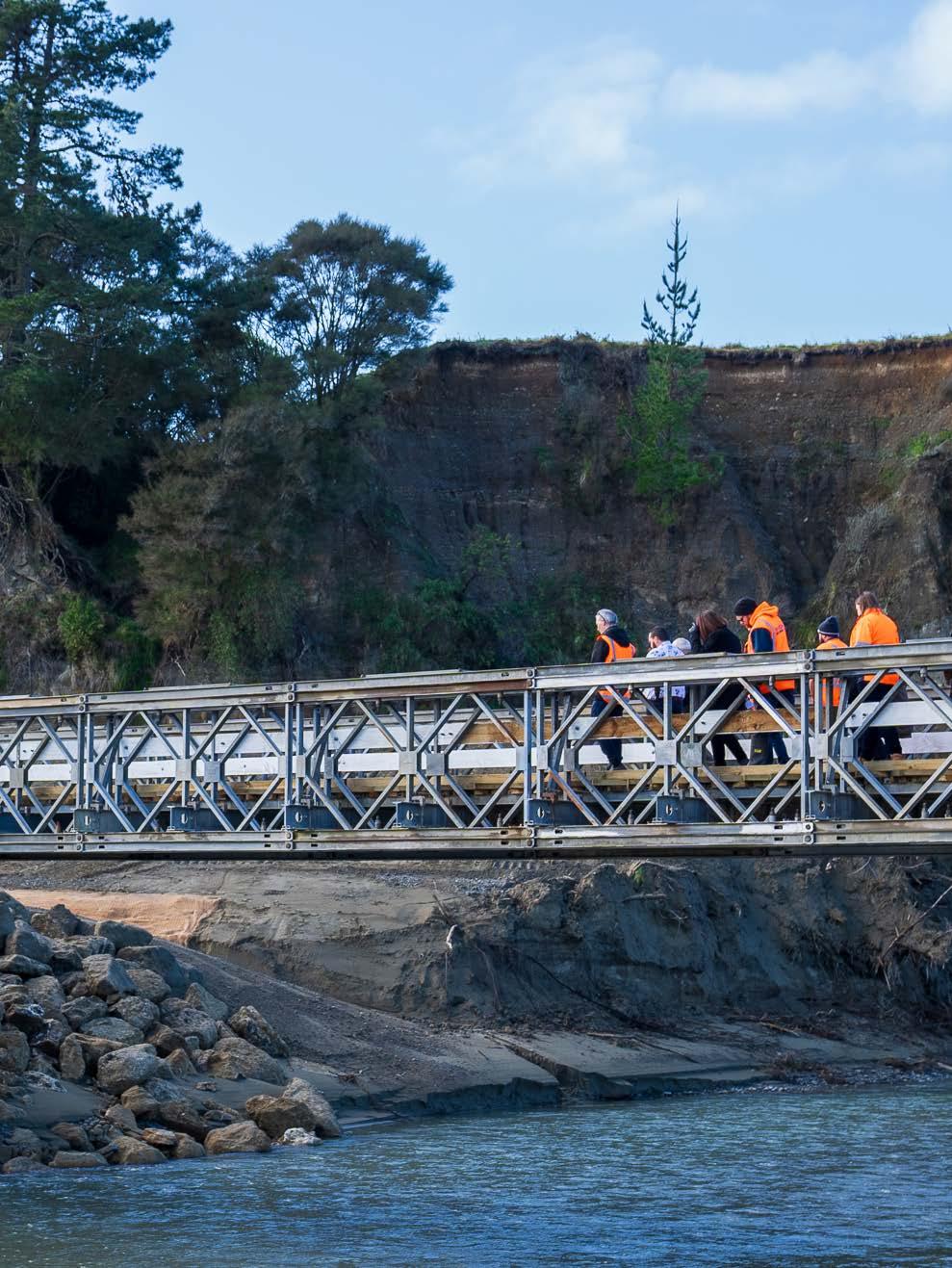
Te ara whakaora Incorporating amendment to Revenue and Financing Policy and Draft Development Contributions Policy. April 2024 Road to recovery 2024-2034 Draft Long Term Plan Consultation Document
Once you’ve read this information, please provide your feedback, particularly on:
• a cyclone targeted rate
• growth
• delaying nice-to-have projects
• the rates and debt plan
There are two ways to have your say Head online to myvoicemychoice.co.nz
OR
Complete the reply-paid card at the back of this document and pop it in any NZ Post letterbox, or to one of the Hastings libraries (Flaxmere, Hastings, Havelock North), or into Hastings District Council customer service centre in Lyndon Road.
More information
This document is a summary of the full Draft Long Term Plan containing the Amendment to the Revenue and Financing Policy–you can download the full Draft Plan at myvoicemychoice.co.nz or view a printed copy at any of the locations below. You can also have your say on the Amendment to the Revenue and Financing Policy and the Draft Development Contributions Policy.
• Hastings District Council Customer Service Centre, 207 Lyndon Road East, Hastings
• Hastings, Havelock North or Flaxmere Library
Got questions? Feel free to phone our friendly customer service call centre on 06 871 5000.
Attend an information event
Visit our website myvoicemychoice.co.nz for more details.
Welcome KIA ORA He
reo ahurei tōu Your voice is important 5PM, MONDAY 27 MAY 2024 SUBMISSIONS CLOSE
Why are rates increasing?
Councils across New Zealand are under financial pressure. Some of the reasons are...
Proposed rate increases
38%

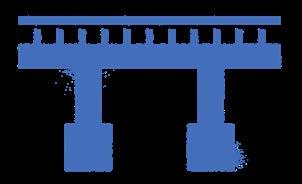
27%
MORE EXPENSIVE THAN THREE YEARS AGO
30% BRIDGES ARE ROADS AND WATER SUPPLY SYSTEMS ARE SEWERAGE SYSTEMS ARE MORE EXPENSIVE TO BUILD THAN THREE YEARS AGO

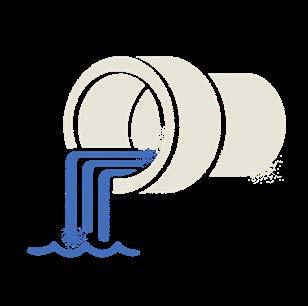
MORE EXPENSIVE THAN THREE YEARS AGO
Source: Infometrics report on local government costs, 2024
In this document you will also find details on our district’s particular challenge: recovering from Cyclone Gabrielle.
Council is proposing short-term borrowing (two years) to smooth rate increases.
To see the impact on your property, enter your address into the online rates calculator: hastingsdc.govt.nz/ my-property
Why a three-year plan?
After Cyclone Gabrielle, the government changed the requirement for affected councils to produce a 10-year Long-Term Plan. We have included information over 10 years where possible because our funding challenges need a longer-term view.
On average: Year one 25% (base cost 17% + cyclone 8%) Year two 15% (base cost 9% + cyclone 6%) Year three 10% To fund over three years: Cyclone Gabrielle 14% Infrastructure 16% (non-cyclone - roads, three waters) Interest 13.5% Labour costs 7.5% Insurance 1.5% Less (budgeted savings) (2.5%)
ROAD TO RECOVERY • 3
The cost of doing business means different things to different people across our district. On page 31 you will find sample property impacts to highlight this. In a nutshell the impacts are as follows: Urban
For residents living in our major urban areas of (Hastings, Flaxmere and Havelock North) the key impacts are:
Cyclone Gabrielle recovery Cyclone recovery costs.
Business as usual cost pressures
Non-cyclone related cost pressures (outlined on the previous page).
Three waters service charges
Continuous improvement of our core water services (drinking water, wastewater and stormwater) to comply with new standards comes with increased cost. The rates for these services will increase over the next three years.
Why are the impacts a little less in our commercial areas?
Total rates paid by a commercial property are typically much higher than a residential property. Therefore, while the commercial sector is also paying its share of the cost – the impact in percentage terms appears a little lower.
Rural
In our rural areas the key impacts are:
Cyclone Gabrielle Cyclone recovery costs.
Road Renewals
Escalation in non-cyclone related road renewals to upgrade the district’s ageing roads. The nine-year increase in road renewal funding in this plan reflects the community consultation process held for the 2021 Long Term Planning process.
Business as usual cost pressures
Non-cyclone related cost pressures (outlined on the previous page).
Why is there a bigger impact on smaller properties and our coastal settlements?
Some of our coastal settlements are connected to these services (water, wastewater and refuse collection). These activities have particular cost pressures.
When it comes to uniform charges (where everyone pays the same) for things like water, wastewater and refuse, and the 50 per cent share of the proposed new cyclone recovery rate, the impact in percentage terms is greater on lower valued properties.
4 • TE ARA WHAKAORA
Ngā ihirangi/Ngā kai o roto
Contents Kei a koe te anamata/Nōu te ao Our future starts with you 6 Tāu i kī mai What you told us 8 Ko koe te pae tawhiti Cyclone Gabrielle – the impacts and the cost 10 Ngā pāpātanga nui Big impacts 11 Ngā tāra nui Big dollars 13 Ētahi atu tino take tuāhanga Other significant infrastructure issues 16 Ngā Wai e Toru Three Waters 17 Te whakahou me te tautiaki huarahi Roads renewal and maintenance 19 Ngā para me ngā hangarua Rubbish and recycling 20 Te whakatere i tō tātau wero ahumoni Navigating our financial challenge 22 Mahere pūtea Budget savings 23 He aha tā mātau mahere ā-moniwhiwhi? What’s our plan for income? 24 He aha tā mātau mahere ā-nama? What’s our plan for borrowing? 26 Ka ahatia te pūtea? What does it mean for money? 28 He aha te utu? What will it all cost? 29 Ka ahu mai te pūtea i hea? Where will the money come from? 29 Ka ahatia ahau me āku tāke kaunihera? What does it mean for you and your rates? 30 He aha ngā whakatau nui? What are the big decisions? 33 Te pāpātanga heipū e whakaora ai i ngā waihotanga a te huripari Cyclone recovery targeted rate 34 Te tipu whakahaere Managing growth 38 Ngā kaupapa tōmina Nice-to-have projects 41 Te mahere whānui i ngā tāke kaunihera me ngā moni tārewa Overall rates and debt plan 44 Kōrerotia tō kōrero Have your say 46 Provide your feedback on the big decisions for our future ROAD TO RECOVERY • 5
Kei
Our future starts with you
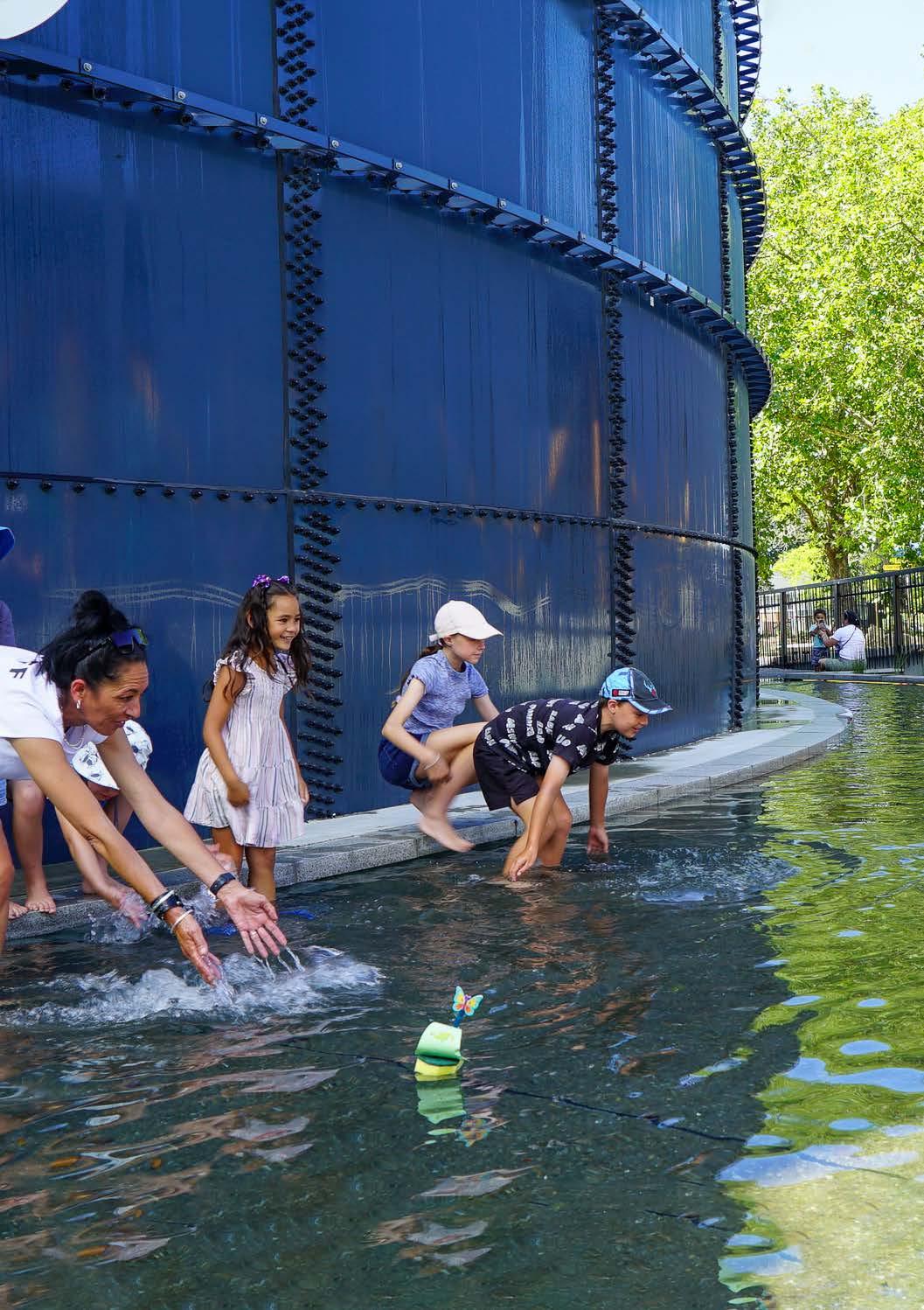
Welcome to Council’s Draft Long Term Plan. It pulls together all of our expected activities, major projects, income and costs, and forecasts rates over the next 10 years.
a koe te anamata/Nōu te ao
6 • TE ARA WHAKAORA
Due to the disruption caused by Cyclone Gabrielle, the government changed the requirement to produce a 10-year-plan, instead allowing for a three-year unaudited plan covering 2024-2027.
This recognised the impact the cyclone had on our resources and ability to deliver previously planned projects.
Despite this change, we have gone ahead and provided the best estimates we have on budgets beyond June 30, 2027, to give the community an overall picture of what is in the pipeline, and the funding strategy to support it.
In the previous Long Term Plan, our council had a strong focus on supporting growth activity – investing in infrastructure for residential housing, and industrial and commercial development, to provide for growth and generate better outcomes for the community.
A lot has been achieved, but postCovid and Cyclone Gabrielle, the economic environment is now very different and unpredictable, and it is important to carefully consider how we move forward with new projects to enable growth, as well as support business as usual given the financial risks.
When we started to develop this plan we asked members of the community to talk with us and give us an idea of what people felt was important for our district as we look forward together.
Those that took part told us that basic services need to be the first focus, particularly roads and water. Getting
the district back on its feet after the cyclone was another key theme.
You also told us that rates affordability has increasingly become a key concern and to balance our aspirations with the ability for our community to pay for it.
Our plan is to tackle the impacts from the cyclone head on, to address the immediate needs of the recovery through the introduction of a new targeted rate to fund that work.
At the same time, this plan keeps debt within our borrowing limit, but there’s no doubt it’s a real challenge, and servicing the debt will have a significant impact on rates.
Through this planning process we are asking you to consider our preferred options for some of the big-ticket items and how we’ll pay for them. We also want to hear what you think about where we have identified we could take a pause to save some money.
Whether you agree or disagree, or have different suggestions, please let us know. We look forward to your feedback.

ROAD TO RECOVERY • 7
Mayor Sandra Hazlehurst Heretaunga Hastings District Council
What you told us
In November we held public workshops, followed by an on-line forum over the next three months, to get feedback on what we should and shouldn’t include in the the Long Term
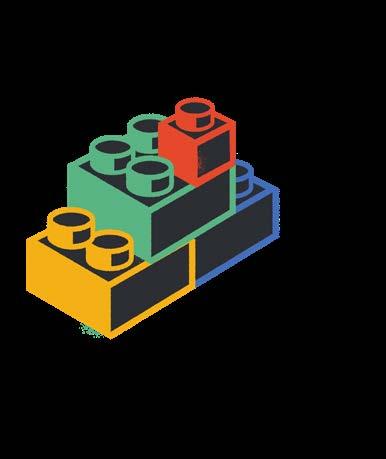
Here is a snapshot of the themes:
KEEP OUR ROADS WELL MAINTAINED
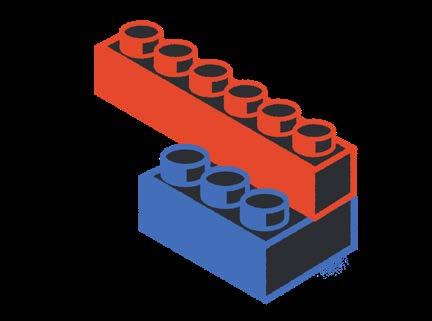


PRIORITISE INFRASTRUCTURE INVESTMENT PRIORITISE CYCLONE RECOVERY
Focus on processes and efficiency:
• Clearer processes – simplify
• Better local government coordination across the region
• Don’t overregulate
• Think long-term
• Be accountable concerning spending
• Listen to the people.

Planning and Land Use
Focus on housing tension and protecting valuable soils:
• Don’t take away fertile land
• Protect green space
• Build up instead of spreading out
• Consider satellite towns
• Ensure a focus on quality intensive housing
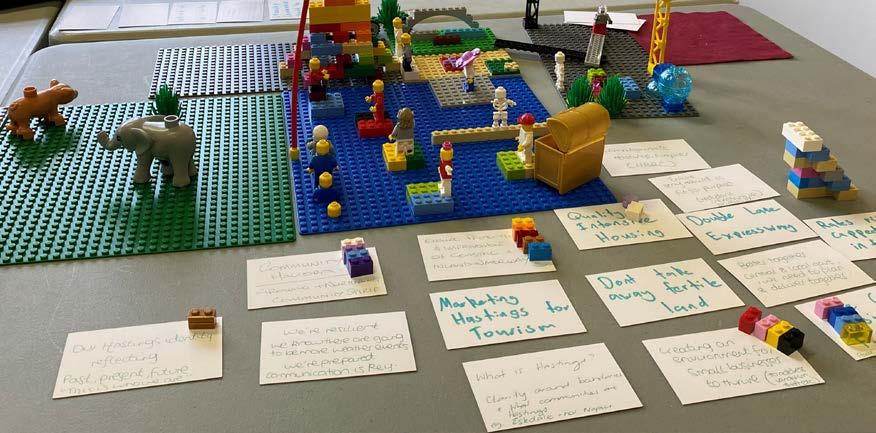
• Caution as to where higher density being allowed
• Support housing with good travel corridors
• Consolidate the inner city.

Tāu i kī mai
MORE PAY AS YOU GO –PAYSUSER
8 • TE ARA WHAKAORA

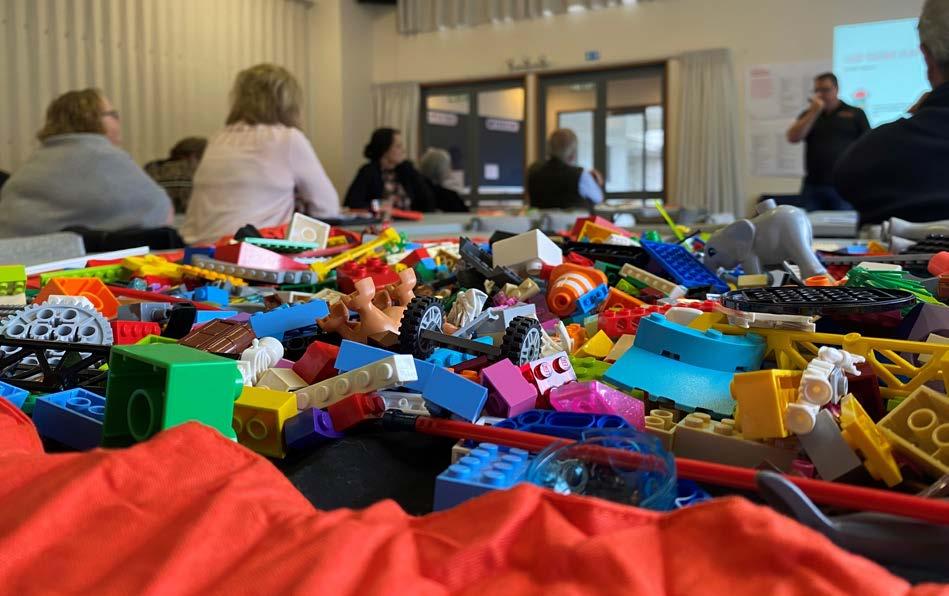
Community Facilities and Social Development
Focus on what we could do less of:
• Less focus on community programmes
• Stop maintaining dead assets
• Slow down city centre upgrades
• Do less of central government responsibilities (Policing and social services)
• Leave social housing to central government
• Stop putting on expensive entertainment
• Less buying of assets.

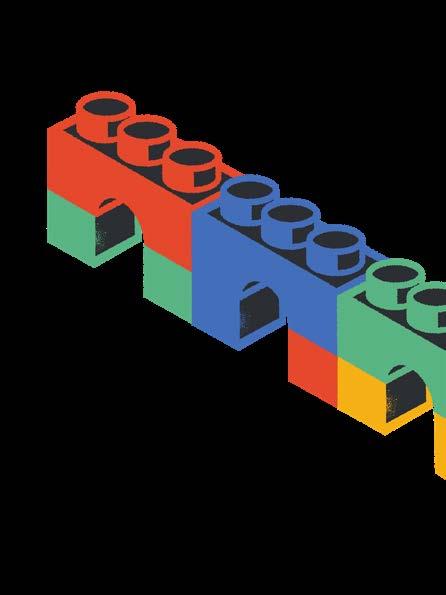
Environment
Focus on environmental concerns:

• Reduce plastics and waste generally
• Better management of rivers and waterways

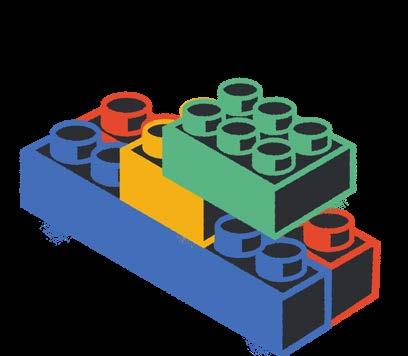
Regulate better for sustainable behaviour
Promote healthy native eco-systems, flora and fauna.
REDUCE BUREAUCRACY, CUT COSTS LIMIT RATESMAXIMISE EXTERNAL FUNDING
OUR INFRASTRUCTURE
SPENDING
BETTERCOORDINATE WITH PROVIDERSUTILITY ROAD TO RECOVERY • 9
BUILD RESILIENCE INTO
STOP
ON NONESSENTIALS



Ko koe te pae
tawhiti
Cyclone
the impacts and the cost
Gabrielle –
10 • TE ARA WHAKAORA
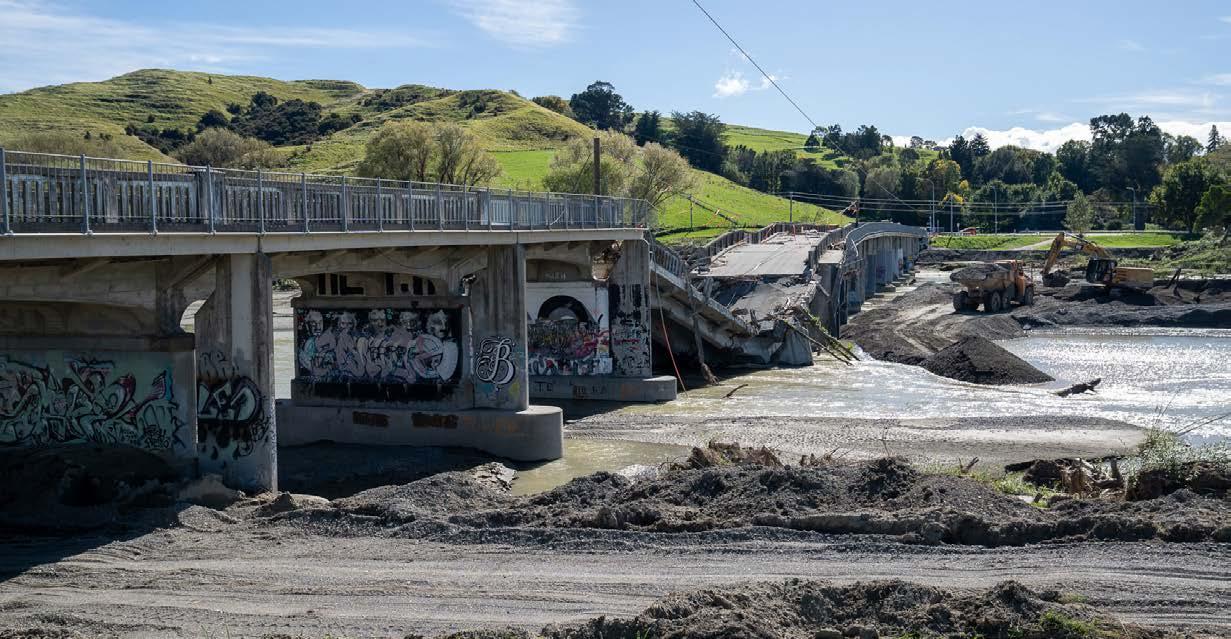

Ngā pāpātanga nui Big impacts

Cyclone Gabrielle caused significant damage across large areas of the North Island on 13 and 14 February 2023. It resulted in the declaration of a National State of Emergency.
Cyclone Gabrielle has permanently altered our landscape and our lives, causing:
• loss of life
• displacement of hundreds of residents from their homes
• hundreds of millions of dollars in damage to infrastructure
• billions of dollars of lost income from crop and land damage
• social, economic and mental health trauma for many in our communities.
The key impacts on Council roads were:
13 bridges destroyed and 28 bridges significantly damaged
2000+ culverts needed repairing or replacement
100km+ roads to be repaired or rebuilt
800+ large slips needed repair
ROAD TO RECOVERY • 11
What’s been done?
• $155m has been spent on cyclone response and recovery phases to date.
• Seven major temporary bridges have been built so far: Rissington, Whanawhana, Ellis Wallace, Dartmoor, Waihau, Moeangiangi, and Redclyffe (Waiohiki).
• All communities have been reconnected with road access.
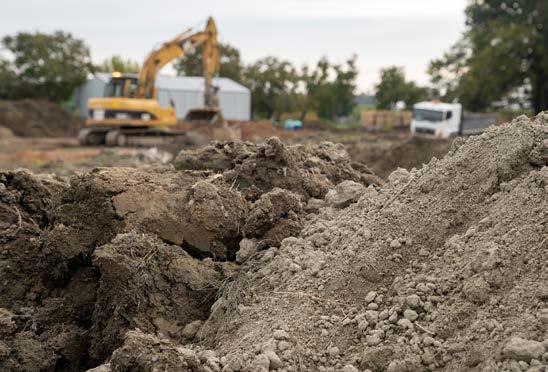
THE IMPACTS ARE BIG THERE’S NO GETTING PAST IT
What is still to do?
• The permanent replacements for the 13 destroyed bridges are in various stages of design. Community consultation is underway.
• Twenty eight bridges have significant structural defects. These have been prioritised, with designs either complete or being done on the high priority bridges, construction of the highest priority bridges is under way.
• More than 200 slips remain on the road network, with most of the over-slips (material fallen onto the road from above) repaired, but the vast majority of under-slips (beneath the road) are yet to be fixed and some require advanced engineering design solutions.
• Many culverts were destroyed, blocked or broken during the storm. In many instances temporary culverts have been installed to create access to communities. However, substantial work is required on permanent solutions.
• There are still several detours in place around roads that have been closed for some time and are some time away from being repaired.
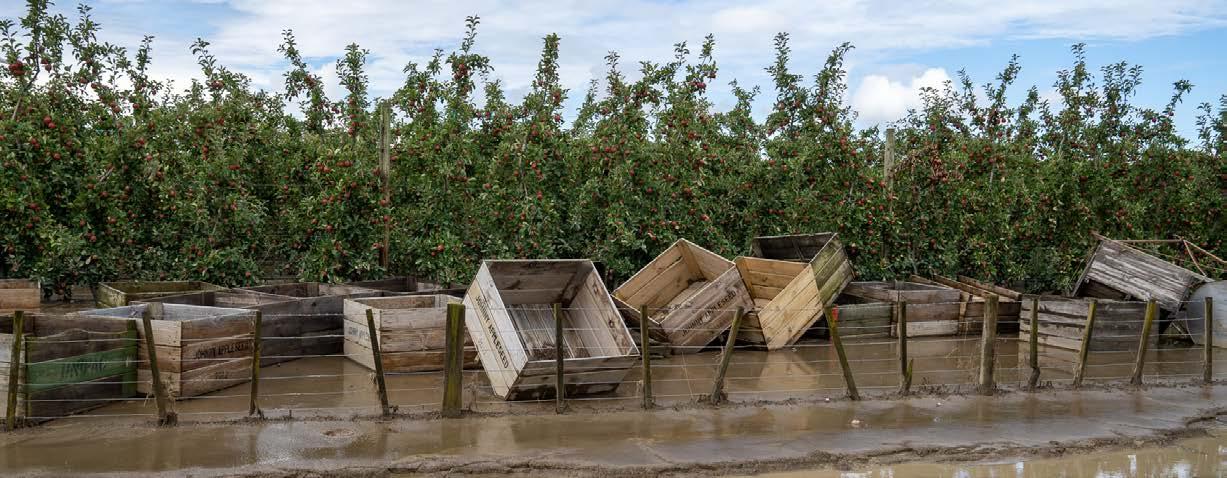
12 • TE ARA WHAKAORA
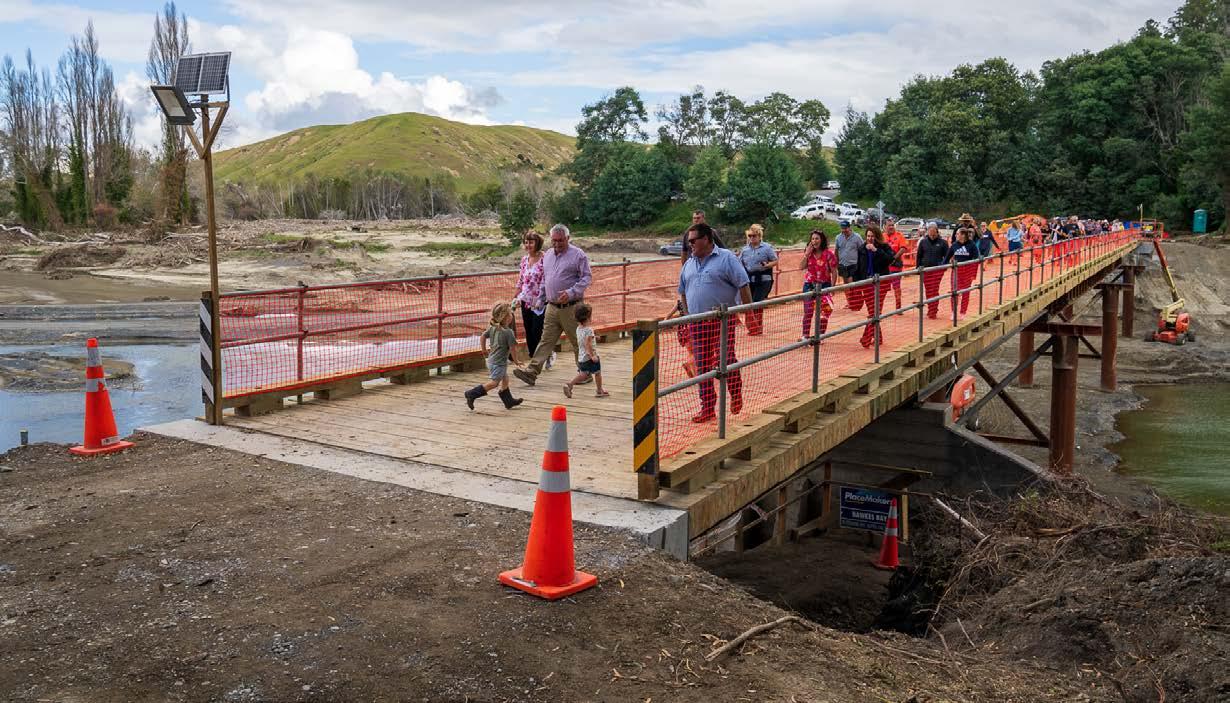

Ngā tāra nui
Big dollars
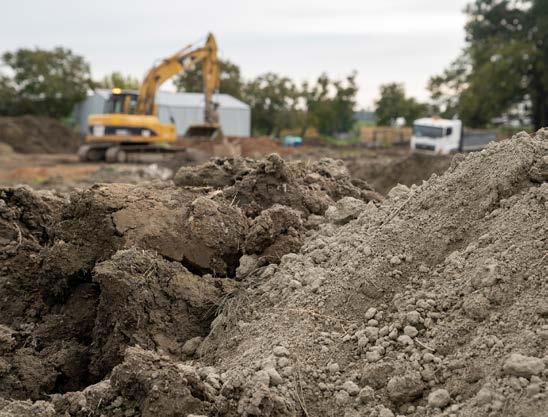

The estimated cost to finish reinstating the district’s roading network is $795m plus. (This is on top of the $155m already spent.)
What’s in front of us?
• Council’s share of the remaining roading bill is about $170m, with the rest coming from the Crown and the NZ Transport Agency. We have planned to complete the roading recovery programme over the first six years of the Long Term Plan.
• The Voluntary Buy-out Programme for eligible category 3 properties (in conjunction with the Crown) is in full swing. Council’s cost is $50m.
• Repairs to three waters and parks will cost $10m.
$950m ROADS AND BRIDGES
What impact does this have on debt?
Council will need to fund $230m for cyclone costs, in addition to borrowing for Council’s scheduled capital programme. This would see overall debt peaking at $701m.
ROAD TO RECOVERY • 13

How can we pay for this?
The cost will be substantial. The cyclone recovery programme is forecast to cost an average of $17m per year over 16 years.
If we spread this over all properties, the average cost would be $620 per property a year.
Council is proposing introducing a new targeted rate for Cyclone Gabrielle recovery which you would see separately listed on your rates bill. See page 36 for more details.
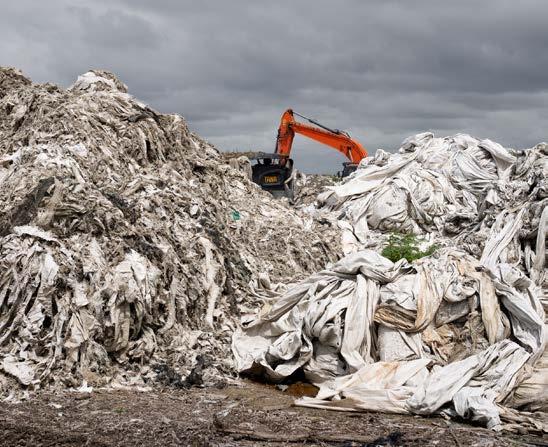
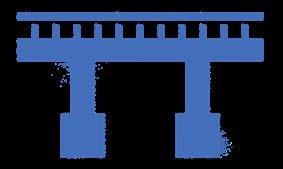


THE DOLLARS ARE BIG THERE’S NO GETTING PAST IT $159m SEALED PAVEMENTS $301m BRIDGES $241m SLIPS 14 • TE ARA WHAKAORA

What about resilient communities?
In addition to investment by various agencies across the region, Hastings District Council (with funding support from Ministry of Primary Industries and Red Cross) is rolling out:
• 30 Community Emergency Hubs where people can get supplies and information when they are cut-off
• Two mobile emergency trailers that can be filled with resources and towed or lifted by helicopter
• Equipping urban community centres to enable them to act as temporary Civil Defence centres.

$94m CULVERTS
What about resilient flood infrastructure?
Hawke’s Bay Regional Council has a comprehensive investment plan in response to Cyclone Gabrielle.
Key elements include:
• A four-year build programme of flood schemes to protect at-risk areas
• Three new pumpstations
• New river monitoring telemetry
• Improvements to existing flood protection infrastructure.
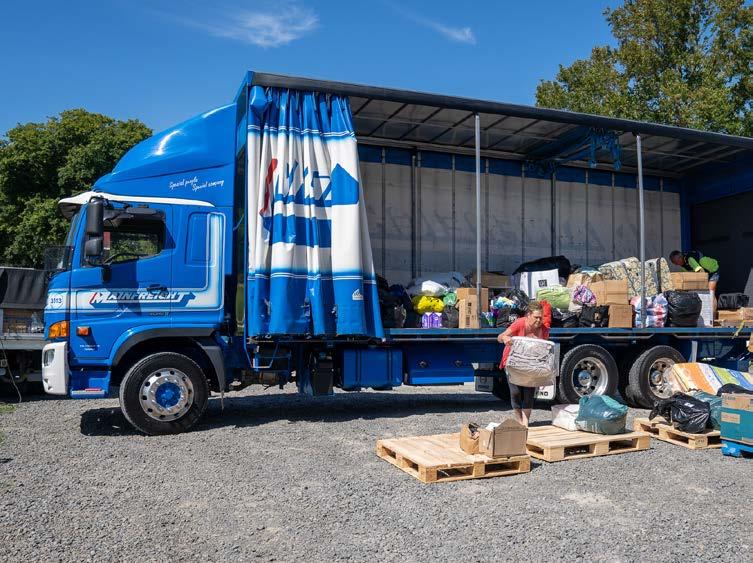
ROAD TO RECOVERY • 15



Other significant infrastructure issues Ētahi atu tino take tuāhanga
16 • TE ARA WHAKAORA

Ngā Wai e Toru
Three waters
How three waters services will be delivered and paid for in the future is uncertain as councils await Government decisions on its management over the longer term. In the meantime, responsibility remains with councils and forward planning and operations for three waters in Hastings have been factored into this plan.
We’re proposing escalating investment in each of the three waters work programmes to address several challenges.
Drinking water
Since the Havelock North drinking water contamination event, Council has invested circa $100m in new drinking water infrastructure to keep drinking water safe and to meet updated drinking water standards. A new operating environment has also been put in place.

What still needs to be done:
• Getting the best from a limited resource by reducing leaks in the network and continuing community education
• Ongoing improvement to water quality by upgrading control and monitoring systems, reducing potential contamination points, and continuing with water treatment upgrades.
This will see a significant cost increase per property for water and wastewater rates. $70m
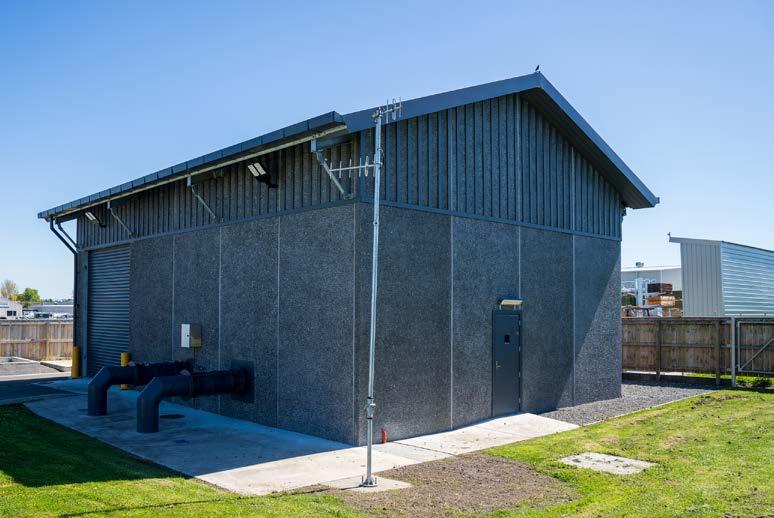
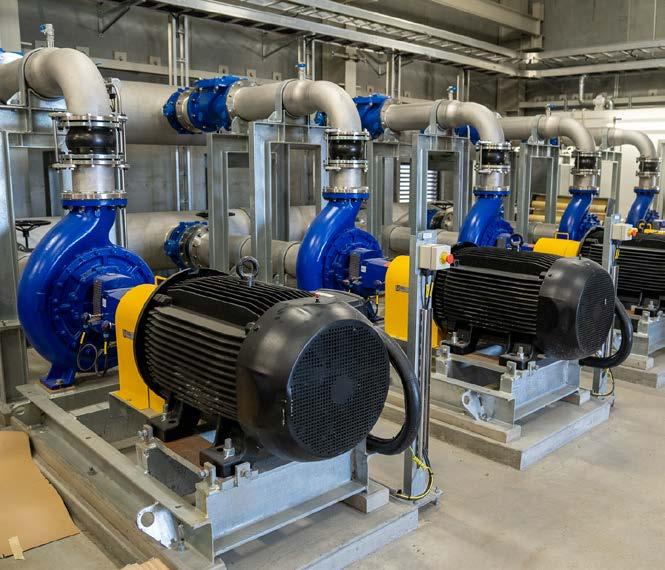
ROAD TO RECOVERY • 17
OVER THREE YEARS
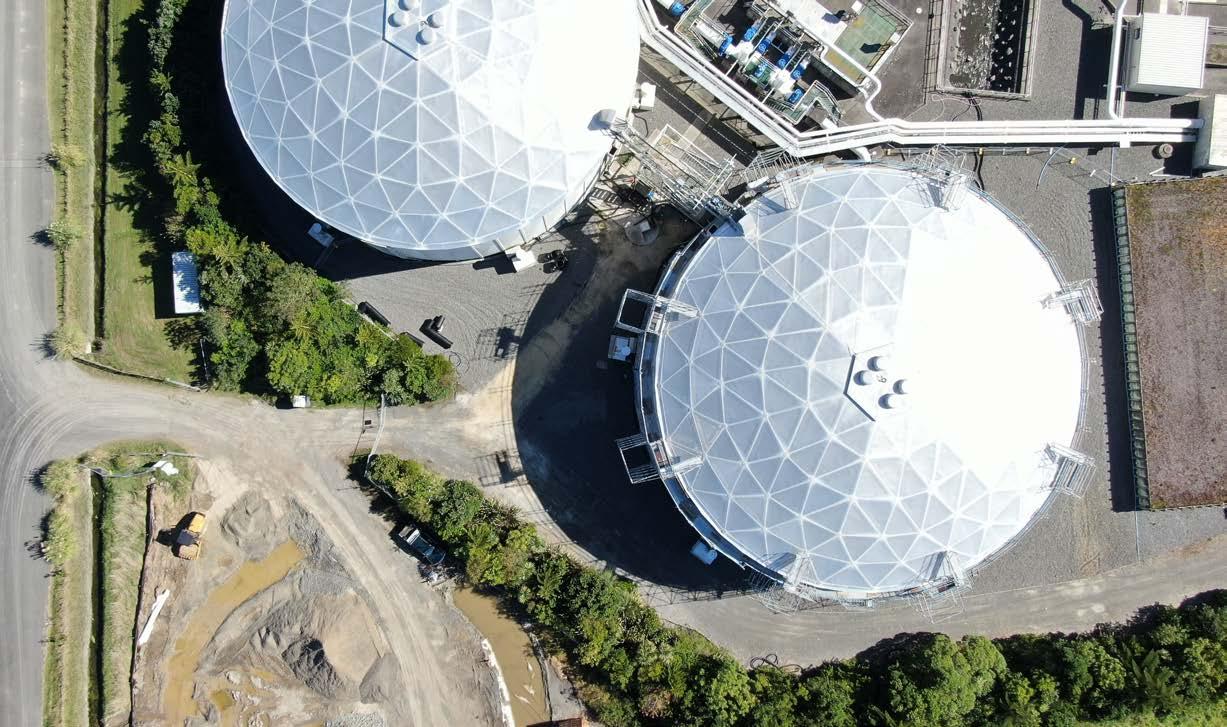
Wastewater
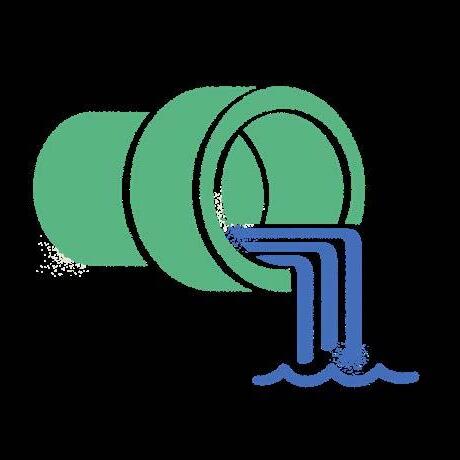
Key challenges are:
• renewal of ageing infrastructure including pump stations, the trunk mains taking sewage to the wastewater treatment plant, and components of the Wastewater Treatment Plant
• addressing vulnerabilities such as the impact of more severe weather events on infrastructure by increasing emergency storage and electrics resilience
• enabling future growth by installing new arterial wastewater pipes around our city.
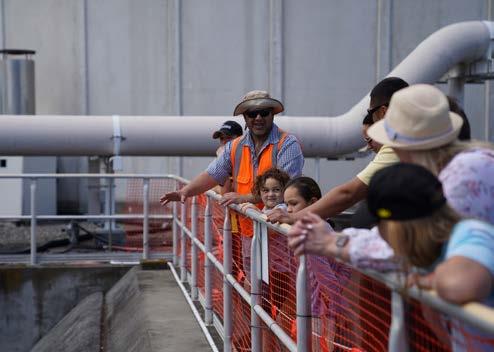
Stormwater
Key challenges are:
• building resilience to prepare for more severe weather events with new flood resilience work and renewing/upgrading existing systems
OVER THREE YEARS $158m $42m
• intensification of housing means more stormwater for our systems to cope with. Investments are required to increase stormwater capacity.

OVER THREE YEARS
18 • TE ARA WHAKAORA
Te whakahou me te tautiaki huarahi Roads renewal and maintenance
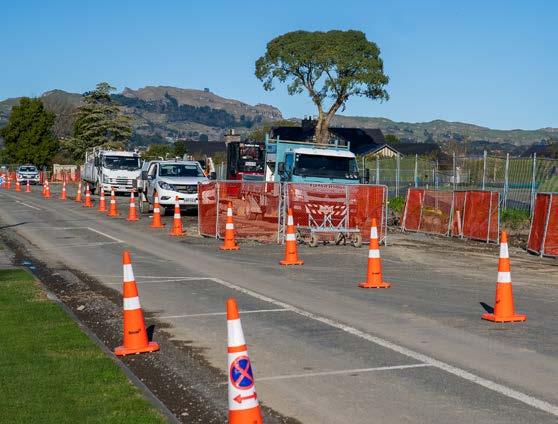
Hastings has an extensive urban and rural roading network. As these roads get older, the challenge is to keep up with the road renewals and maintenance.
Many of our roads are approaching the latter years of their life. This makes planned renewal and maintenance a key ingredient of Council’s work programme and budget. We don’t need to rush out and replace all our roads right now, but we know we need a period of ongoing and increased investment to stop our roads deteriorating further.
In addition to cyclone recovery work, we also need to meet the following 10 challenges:
• Bridges: renewal of retaining walls
• Road rebuilds: some roads are reaching end of life and wet weather makes them more vulnerable so they need rebuilding
• Road resealing: escalating by about 20km per year
• Unsealed roads: increased road re-metalling
• Drainage: ongoing renewal and maintenance to ensure maximum road life


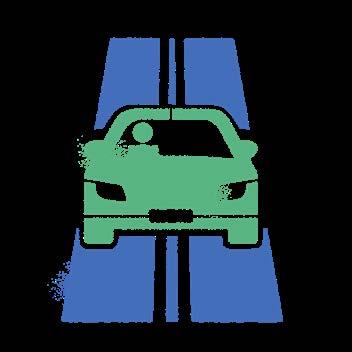
• Footpath maintenance and renewal: continuing focus
• Environmental maintenance: continued but slowed focus on mowing, litter pickup and vegetation control
• Safety: aligned with the national Road to Zero safety strategy, focusing on high-risk areas and intersections and speed management
• Walking and cycling network: no significant new extensions in this plan; focus after that on lower speeds around more schools and neighbourhoods, and addressing critical gaps in the network
• Broader network development: focus on key corridors (Karamū Rd, St Aubyn St, Pakowhai Rd and Maraekākaho Rd); continue improvements on Napier-Taihape Rd, Middle Rd, Te Mata Rd and Waimārama Rd.
ROAD TO RECOVERY • 19
$425m OVER TEN YEARS
Ngā para me ngā hangarua
Rubbish and recycling
Getting the most out of our landfill is a priority, as is further development to set us up for the future.
The current landfill valley is nearing capacity and construction of a new cell is underway.
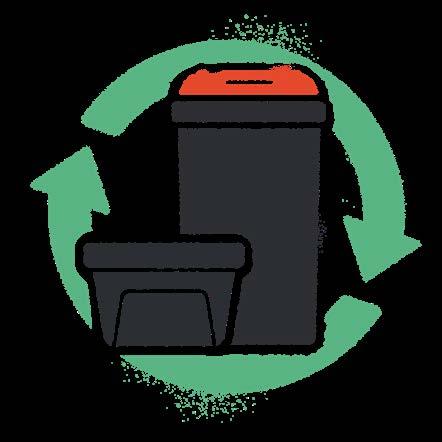

20 • TE ARA WHAKAORA
The three key rubbish and recycling themes for this Long Term Plan are:
Ōmarunui Landfill
• Work on an already planned new ‘cell’ at the landfill is underway, however the additional tonnages received at the landfill from Cyclone Gabrielle have increased the need to speed up landfill expansion. A total investment of $37.6m is included in this Long Term Plan.
Blackbridge historic landfill (closed 1979)
• This project entails stopbank improvement work near the landfill in the lower reaches of the Tukituki River catchment and is a joint project with Hawke’s Bay Regional Council.
• This work is anticipated to be carried out within the 10-year term of this plan. The timing is dependent on post-cyclone stopbank work.

New changes ahead
Changes set by central Government include kerbside pickup collection of residential food scraps by 2027.
• All residential properties within the existing kerbside recycling and rubbish collection areas will be included
• The cost is likely to be similar to the current costs for kerbside recycling, but is not yet budgeted
• More work and a feasibility study will be completed on the best approach for Hastings, followed by public consultation.
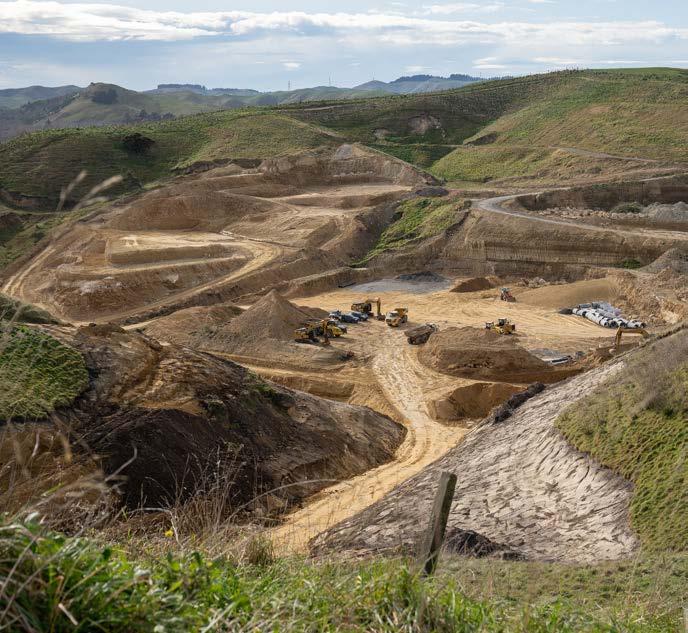
ROAD TO RECOVERY • 21



Te whakatere i tō tātau wero ahumoni
Navigating our financial challenge
KEY OUR ISSUE
22 • TE ARA WHAKAORA
Mahere pūtea Budget savings

The challenges are significant. In addition to cyclone costs, Council needs to keep normal services and facilities operating for the community.
As well as carefully scrutinising current budgets for savings, Council has set a further savings target of 2.5 per cent in Year 1 of the plan. In a second phase, Council is committed to identifying (by December 2024) further savings in the 2025/26 financial year.
Councils, just like households, are impacted by this sustained period of higher inflation. It affects the cost of labour, materials such as pipes and bitumen, and other areas such as insurance. These are placing pressure on Council’s finances.
Pausing projects
In addition to reducing costs, Council has ‘stretched out’ its capital programme so we don’t have to borrow too much too quickly.
So, for example, we are suggesting we take a breather for a few years from investment in our central city and parks, and on walking and cycling paths, particularly given Council has invested significantly in these over recent years.
The following pages show how this comes together in terms of rates and debt.
Closure of Frimley Pool
Rapidly declining use of the pool leading to increasing costs to ratepayers has led to a proposal to close Frimley Pool.
At such low numbers, operating the pool costs $32 per user, with adults (aged over 18) paying just $6 for entry. Ratepayers fund the balance.
The rapidly declining use of the pool, future investment requirements, the availability of lane-swimming at the nearby Mitre 10 Park pool, and a recommendation in the Aquatics Strategy to close the pool are the key reasons.
Closure of the pool would save about $250,000 per annum. Some plant and equipment could be repurposed to other pools.
Council is in discussion with schools that have historically used the pool and may consider alternative arrangements with them or other interested parties such as leasing if that is workable.
Given the land’s reserve status, the most likely future use of the site is as an extension of Frimley Park. Some closure and reinstatement costs would be incurred but these would be funded from savings from closing the pool.
ROAD TO RECOVERY • 23
What’s our plan for income?

Despite receiving a funding support package from Government, our district is left with a massive recovery bill. To tackle that we’re proposing rates increases, to get debt under control and balance the budget. These are significant but will get Hastings back on track.
Council signalled last year that a period of elevated rates increases would be required to fund the huge impact of the cyclone on our infrastructure and community.
Balancing our budget means setting operating revenues that will cover operating costs. We don’t need to do this immediately, but we do need to get there in future years.
The graphs show we need to increase rates to balance the budget by year two of this plan. This requires rate
increases of an average 25 per cent in year one, 15 per cent in year two, and 10 per cent year three (noting that cyclone recovery makes up 14 per cent of these increases).
As the graphs show, the cyclone recovery rate represents a higher proportion of the rate increase in the first two years for Rating Area Two, compared to Rating Area One. That reflects that most of the work needs to be done in the rural area.
By dealing with debt earlier, rate increases can drop to around four per cent in urban areas and seven per cent in rural areas, from about year four.

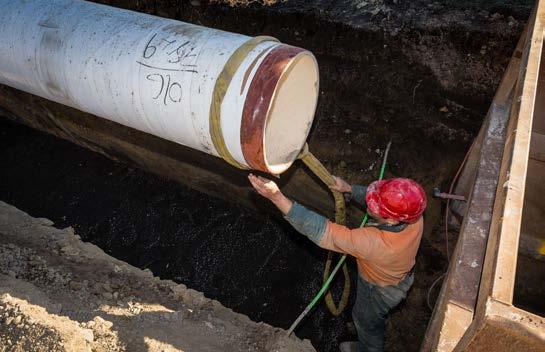
He aha tā mātau mahere ā-moniwhiwhi?
24 • TE ARA WHAKAORA
Note: In the urban area the rates impact of the cyclone is less, due to the lower allocation and large proportion of rates paid for services such as three waters and refuse collection.
Note: In the rural area the first two years are focused on funding cyclone recovery (with short-term borrowing for other costs); from year three onwards higher increases are needed to fund ongoing rural road renewals.
0.00% Benchmark met 20.00% 40.00% 60.00% 80.00% 100.00% 120.00% 140 00% 24/25 25/26 26/27 27/28 28/29 29/30 30/31 32/33 31/32 33/34 Benchmark not met Benchmark Adjusted Balanced Budget Benchmark 0.00% Base Increase 5.00% 10.00% 15.00% 20.00% 25.00% 24/25 25/26 26/27 27/28 28/29 29/30 30/31 32/33 31/32 33/34 Cyclone Rate Rating Area Two Rates Forecast (Rural Area) Rating Area Two (rural area) Annual Rating Revenue Movement Adjusted Balanced Budget Benchmark 0.00% Base Increase Rating Area One Rates Forecast (Greater Urban Area) 5.00% 10.00% 15.00% 20.00% 25.00% 24/25 25/26 26/27 27/28 28/29 29/30 30/31 32/33 31/32 33/34 Cyclone Rate Rating Area One (Greater urban area) Annual Rating Revenue Movement
ROAD TO RECOVERY • 25
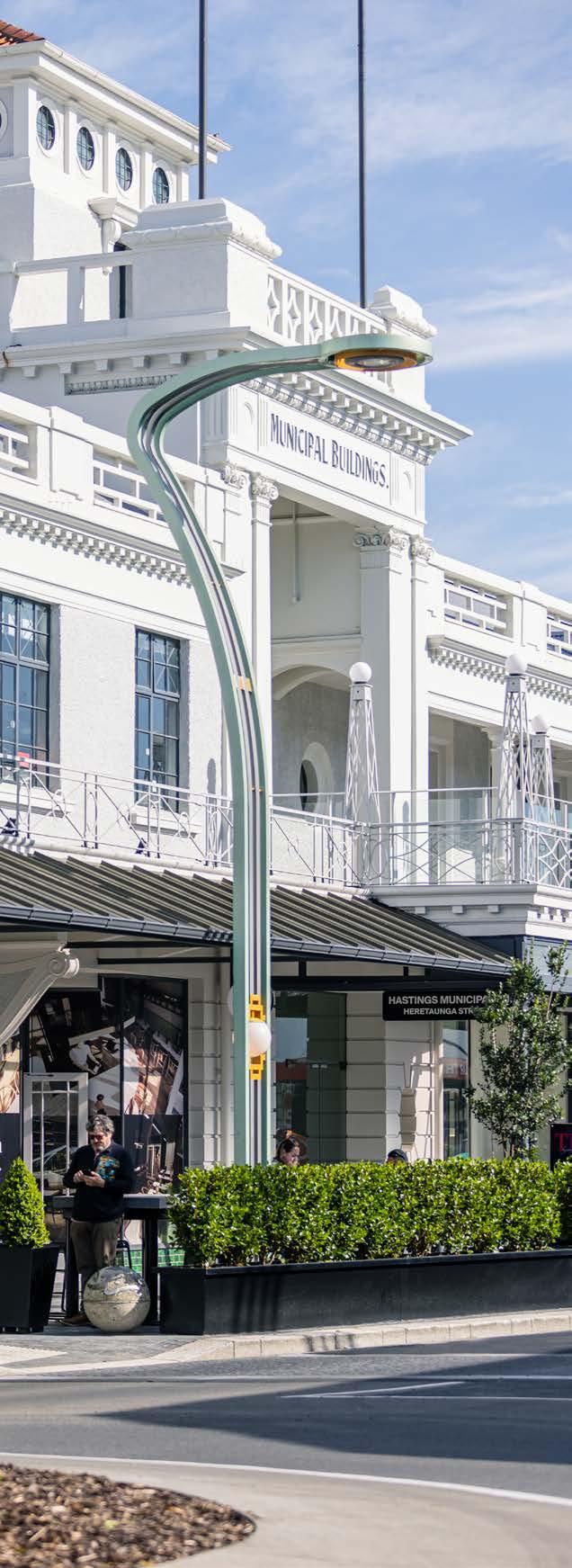

He aha tā mātau mahere ā-nama?
What’s our plan for borrowing?
We’re proposing to increase Council’s debt cap to 250 per cent of income, then progressively reduce that to 175 per cent by year 10 of the plan.
The maximum we can borrow is 280 per cent. Debt is expected to peak at $701m.
26 • TE ARA WHAKAORA
All councils set debt limits, which cap total borrowing. That limit, based on income, is currently set at 175 per cent. Unfortunately, we will need to increase that limit in the medium term to fund the cyclone recovery and regular Council activity.
This plan proposes raising the debt limit to 250 per cent in years one to five and then reducing progressively to 175 per cent by year 10. This means there will only be $90m of ‘debt headroom’ in the first five years, retained for any emergency response. The debt headroom grows back considerably after this.
Net Debt as % of revenue
Net Debt as % of revenue
Proposed short term policy 250%
This LTP - 10 year target to reduce debt
Current policy limit 175%
Note: Council is using a modified version of the official measure. The modified ratio excludes the considerable external revenue (such as Government funding) that’s forecast to be received for the cyclone and other projects. If we included that revenue, it would make the financial position look better than it really is. This is because the revenue is a one-off and not ongoing, which masks the actual position the Council will be in in future years.
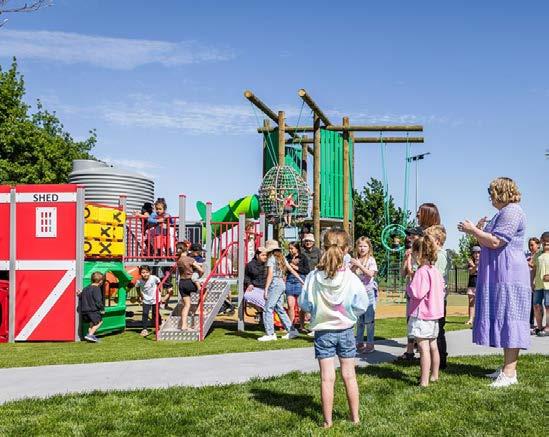
0% 50% 100% 150% 200% 250% 300% 24/25 25/26 26/27 27/28 28/29 29/30 30/31 32/33 31/32 33/34
ROAD TO RECOVERY • 27



Ka ahatia te pūtea?
What does it mean for money?
28 • TE ARA WHAKAORA
He aha te utu?
What will it all cost?
On behalf of residents, Council looks after a range of infrastructure, assets and facilities, from roads to pipes, buildings and land, the public toilets and bins on your local parks.
It also undertakes the massive task of running, regulating and monitoring all the services that contribute to where and how we live, work and play across our district.
The estimated cost of looking after our infrastructure, upgrading community assets, building new ones and providing services is around $4 billion over the next 10 years.

Ka ahu mai te pūtea i hea?
Where will the money come from?
The amount we put towards our mahi needs to be reasonable. The income from rates isn’t enough to cover the costs to complete all the work. We will use loans to fund capital projects and our strategy is to maximise funding from other sources, such as central government, wherever possible.

50.15% Rates 23. 89% Grants and subsidies 4% Development contributions 13. 26% Fees and charges money 0. 96% Other revenue 7. 74% Loans $205m Major community projects $1.5b Operating expenditure $1.9b Key infrastructure $322m Financing costs costs $109m Debt repayment ROAD TO RECOVERY • 29
What does it mean for you and your rates?
Not all rates bills are equal
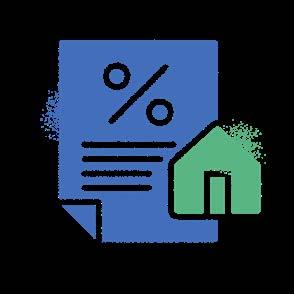
Often you hear people talk about average rates increases being at a certain level. But simply taking that figure and applying the increase to your rates invoice will not necessarily give an accurate representation. Why? There are several reasons.
One property may have a higher valuation than another, or it may be connected to certain Council services whilst another may not. A property may be in an urban area and closer to facilities than a rural property. A property may be used for a commercial purpose rather than as a home. All these factors impact on the level of rates.
We have prepared examples of common types of property in our district and the average rates impact of the proposed 2024/25 budget. These are examples only. For specific information on your property please use the rates database which can be found at hastingsdc.govt.nz/my-property
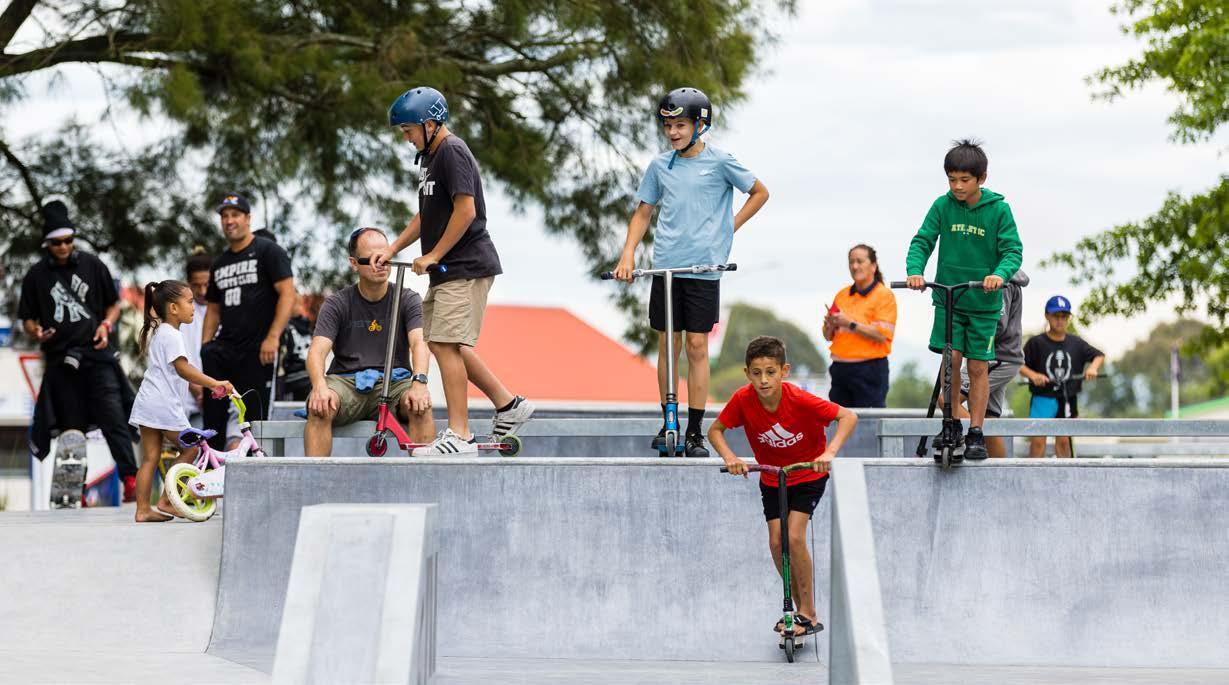
āku tāke
Ka ahatia ahau me
kaunihera?
30 • TE ARA WHAKAORA
Rating Area One – Greater urban area

Residential

Property owners will see increases in drinking water, wastewater, and refuse collection charges, along with the new cyclone recovery rate. The charges will have a slightly bigger percentage impact on lower valued properties.
Property owners (receiving services) will see increases in drinking water, wastewater, and refuse collection charges, along with the new cyclone recovery rate. The charges will have a slightly bigger percentage impact on lower valued properties.

Total rates paid by a commercial property are typically much higher than for a residential property. Therefore, while the commercial sector is paying its share of the costs the impact in percentage terms appears a little lower.

Horticulture / Farming
Horticulture/farming properties in Rating Area One are funding a share of the cyclone recovery costs. As these costs are being funded via a uniform charge (50%) and a percentage based on land value (50%), larger blocks will contribute a greater percentage share.
Average increase 26.5% LAND VALUE ($) RATES 23/24 ($) PROPOSED RATES 24/25 ($) Flaxmere 200,000 2,586 3,294 Hastings 510,000 3,528 4,399 Havelock North 660,000 4,014 4,969 Urban
Average increase Average increase 27% 20% LAND VALUE ($) RATES 23/24 ($) PROPOSED RATES 24/25 ($) Whakatū 280,000 2,478 3,177 Clive 470,000 2,988 3,780 Haumoana 550,000 2,762 3,415 LAND VALUE ($) RATES 23/24 ($) PROPOSED RATES 24/25 ($) Hastings CBD Retail 730,000 17,866 20,242 Havelock Nth CBD Retail 1,070,000 17,699 20,456 Suburban 1,020,000 12,055 14,361 Commercial Non-Urban 1,410,000 11,641 13,519 Townships Commercial / Industrial
Average increase 24% LAND VALUE ($) RATES 23/24 ($) PROPOSED RATES 24/25 ($) Small 980,000 2,677 3,328 Large 2,110,000 5,013 6,142
ROAD TO RECOVERY • 31
Rating Area Two – Rural
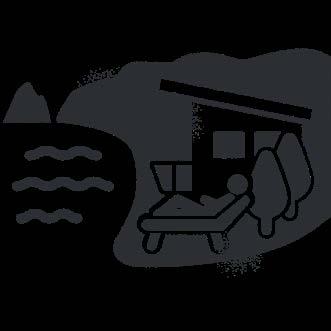
Coastal Residential
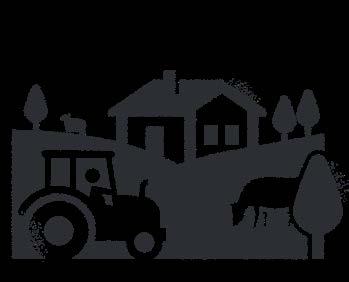
Farming
A ‘farm’ in Rating Area Two is over 1 hectare and used for farming purposes.
These coastal settlements are connected to some services (water, wastewater and refuse collection), which attract charges specific to their area. For uniform charges (where everyone pays the same) and the 50 per cent share of the new cyclone recovery rate, the impact in percentage terms is greater on lower valued properties.
The majority of the land value in the rural area is made up of farming blocks. Farms therefore receive about the average rates increase and typically do not incur any of the increases in particular service charges as they are not connected to these services.
Average increase Average increase 35% 24% LAND VALUE ($) RATES 23/24 ($) PROPOSED RATES 24/25 ($) Whirinaki 660,000 2,323 3,059 Waimārama 660,000 2,168 2,919 Waipātiki 440,000 3,917 5,363 LAND VALUE ($) RATES 23/24 ($) PROPOSED RATES 24/25 ($) Small 1,550,000 3,081 3,862 Medium 3,270,000 5,861 7,050 Large 6,760,000 12,078 14,509
32 • TE ARA WHAKAORA




He aha ngā whakatau nui?
What are the big decisions?
ROAD TO RECOVERY • 33
Te pāpātanga heipū e whakaora ai i ngā waihotanga a te huripari

Cyclone recovery targeted rate
Council is proposing introducing a new cyclone recovery targeted rate (CRTR).
It is considered the fairest way for the community to fund the costs of the cyclone.
We are also proposing that the cyclone transport recovery programme is substantially delivered over the first six years of this plan. It could be delivered over nine years to smooth rates increases, however the transportation network is very fragile and delays could end up costing a lot more.

1 34 • TE ARA WHAKAORA
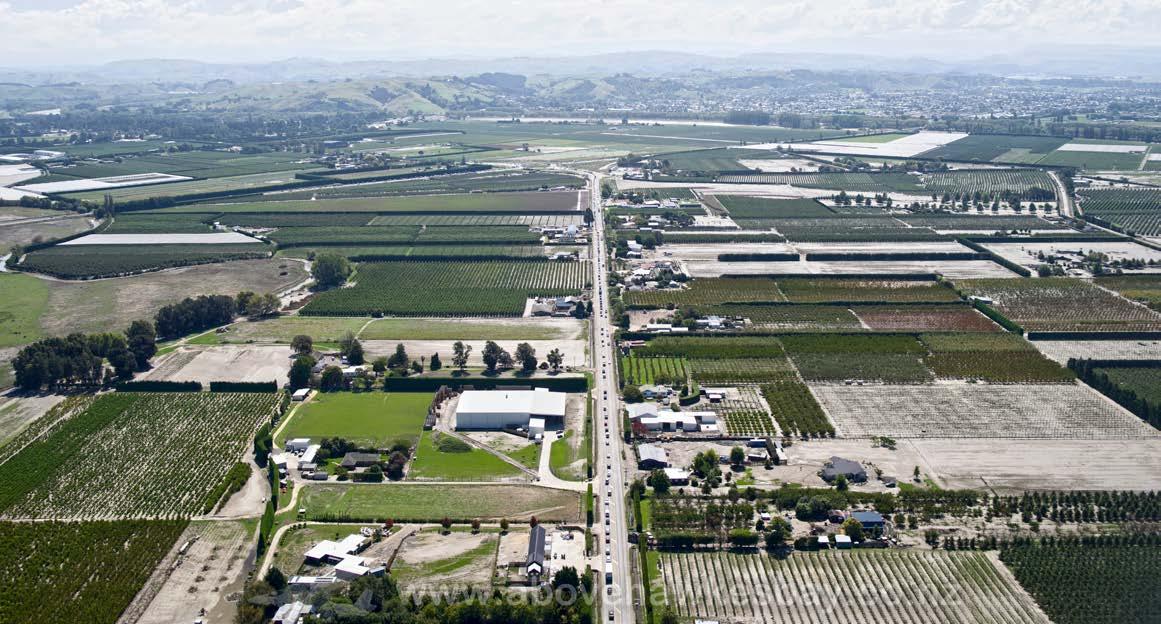
Cyclone recovery budget and cyclone recovery targeted rate (CRTR)
To address the costs of the cyclone, a recovery budget of $230m has been developed for this Long Term Plan. The funds collected through the CRTR will be ring-fenced, meaning they will only be used for cyclone recovery purposes, including:
• rate remissions for cyclone-affected ratepayers
• roading network repairs
• Council’s share of the Voluntary Buy-out Programme for category 3 properties
• Three waters, parks and community resilence
• associated costs for administration and delivery.
A nine-year cyclone recovery programme
Council did consider slowing down some slip and culvert repairs and road sealing work planned for the first six years, to alleviate funding pressure. This would remove about $42m from the first six years.
However, the cyclone-damaged roading network is very fragile and delaying repairs means they will be very vulnerable to further damage in bad weather, resulting in higher overall costs and more inconvenience. Also, across the whole community, the impact on the cyclone rate per property would not be significant. Therefore this approach is not recommended.
ROAD TO RECOVERY • 35
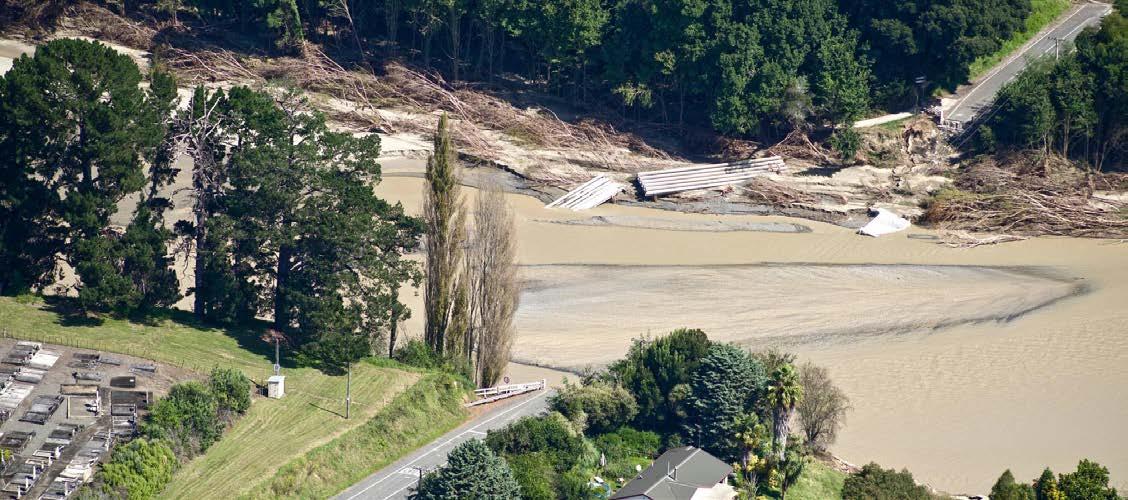
Why should we all pay?
The costs of the cyclone are unprecedented. Despite the roading damage being predominantly in the rural area, there were also impacts in the urban area (for example the Redclyffe and Brookfield bridges). Also, rural roads benefit the whole district in respect of economic activity and access to recreational opportunities.
Council did consider a number of options but is recommending sharing the cost across our district, with the rural community paying a bit more to reflect the direct benefits to those communities.
The cost is allocated based on land value, which sees a split of 67 per cent to the greater urban area and 33 per cent to the rural area.
The finer detail
Council has adopted a ‘we are all in it together’ principle as it is the only practical way of funding the level of costs that come from a natural event of this magnitude. However, the
rate has been set to reflect that some benefit more than others from the repairs.
Everyone paying an equal share would have seen a rate of about $620 a year set on every property. Council then considered the negative impact fixed uniform charges have on lower valued properties.
Therefore, the rate is proposed to be split into two parts. The first 50 per cent will be rated via a fixed charge on every property, phased over two years:
Rating Area One $127 $242
Rating Area Two $323 $617
The other 50 per cent is proposed to be calculated on a percentage of the land value of a property (the same as the general rate).
A detailed working paper can be found in the full Long Term Plan document (Revenue and Financing Policy section).
YEAR ONE YEAR TWO
36 • TE ARA WHAKAORA
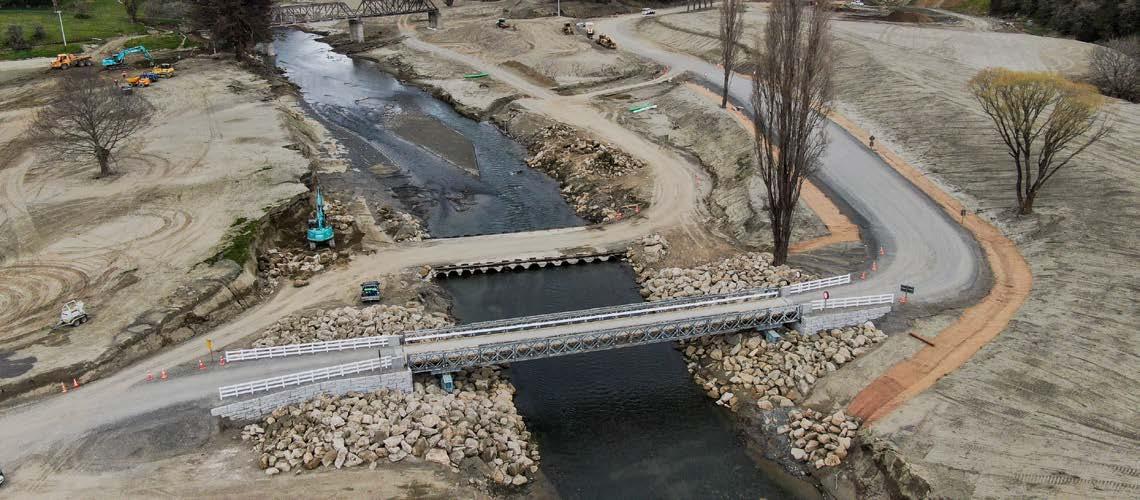
Amendment to Revenue and Financing Policy
In 2023 the Council amended its Long Term Plan to create a new activity for cyclone recovery (inclusive of the Category 3 property buy-out programme). That amendment signalled the introduction of a cyclone targeted rate to take effect from 1 July 2024. This consultation formalises the introduction of that rate within Council’s Revenue and Financing Policy. A link to the policy (in the LTP Supporting Information) can be found at myvoicemychoice.co.nz.
High level budget breakdown
Below is a summary of the cyclone cost to be funded (after various government subsidies).
The proposed Cyclone Targeted Rate has been set to recover these costs over a 16-year period. The total cost to be funded is about $230m (plus interest). The targeted rate will be ringfenced and used only to fund these costs.
EXPENDITURE ITEM VALUE
Give us your feedback on cyclone recovery targeted rate
Roading recovery costs $170m Category 3 Property Buy-out $50m Three waters costs $5m Other (including parks and community resilience) $5m
COUNCIL COST $230m
TOTAL
ROAD TO RECOVERY • 37
Te tipu whakahaere Managing growth

Given the financial challenges, we have had to delay investment in infrastructure (roads, water pipes etc) to service housing and industrial growth. This means we can’t be open for business everywhere. We need to find the right balance; having enough land serviced to meet housing and business needs, with the least financial risk for ratepayers.
Fees and charges
Building Consents and Resource Consents charges are proposed to increase, some by 16 per cent. Inflationary pressures including for compliance and audit standards are increasing the cost of delivering these services. See the full Fees and Charges schedule (in the LTP Supporting Information) via a link on myvoicemychoice.co.nz.
Development contributions
The costs of growth infrastructure are primarily recovered via Development Contributions (fees charged directly to a land developer). This plan signals increases in Development Contribution charges to recover the escalating cost of growth, moving away from a phased approach.
These proposed increases are as follows:
Please find the Development Contribution Policy online at myvoicemychoice.co.nz
2 TYPE OF DEVELOPMENT 2023/24 CHARGE 2024/25 CHARGE Greenfields residential per HUE $33,898.55 $53,632.55 Infill residential per HUE $22,664.20 $34,230.90 Medium density housing residential per HUE $24,826.20 $35,763.85 Semi urban residential/rural residential per HUE $5,991.50 $8,784.85 Office per 100m2 $6,861.88 $10,419.44 Commercial and retail per 100m2 $9,220.99 $13,952.42 Industrial per 100m2 $7,939.37 $12,080.80 Hospitality and accommodation per 100m2 $19,150.89 $29,133.51
38 • TE ARA WHAKAORA
OUR PREFERRED OPTION
Growth infrastructure – carry on with existing commitments only
The completion of new wastewater infrastructure, previously approved and currently under construction, will provide capacity for new housing and businesses within the main urban area.
To mitigate financing risks, this option will see infrastructure projects designed to enable development in the southern urban area moved out to later years.
Any other growth infrastructure projects will need to be carefully scrutinised (or funded by the private sector) to mitigate financing risks to ratepayers.
ANOTHER OPTION
Open up more areas for growth development
We could invest in further growth development, enabling works which would free up the south side of Hastings for development (marked in red on the map on the next page).
Due to the increased financial risk in a slowing economy, this option is not recommended.
New areas could still be opened up if the other partners, government, developers or other entities are prepared to take the financial risk and build to Council standards.
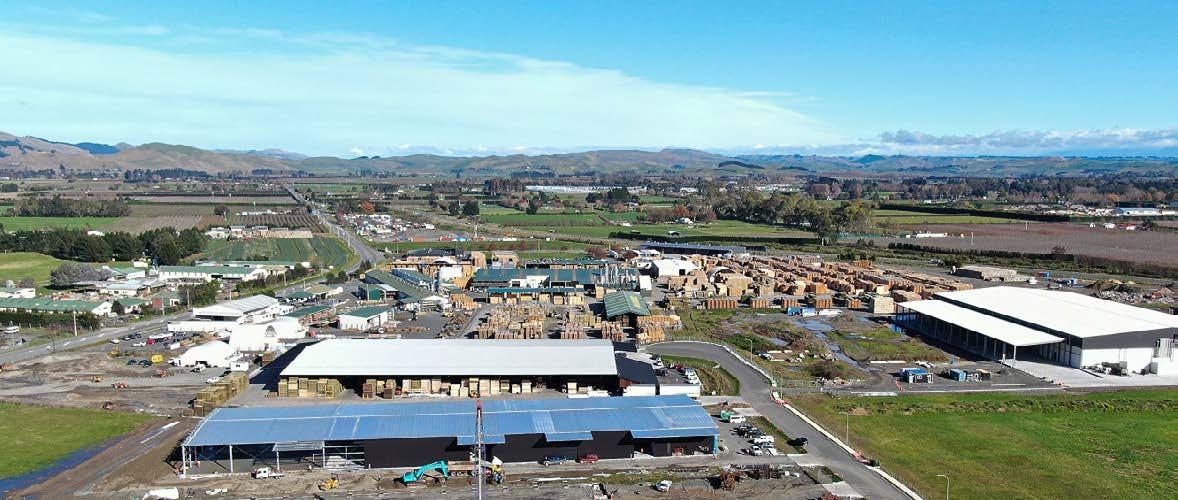
Give us your feedback on managing growth
See next page for growth map
ROAD TO RECOVERY • 39
Growth infrastructure map
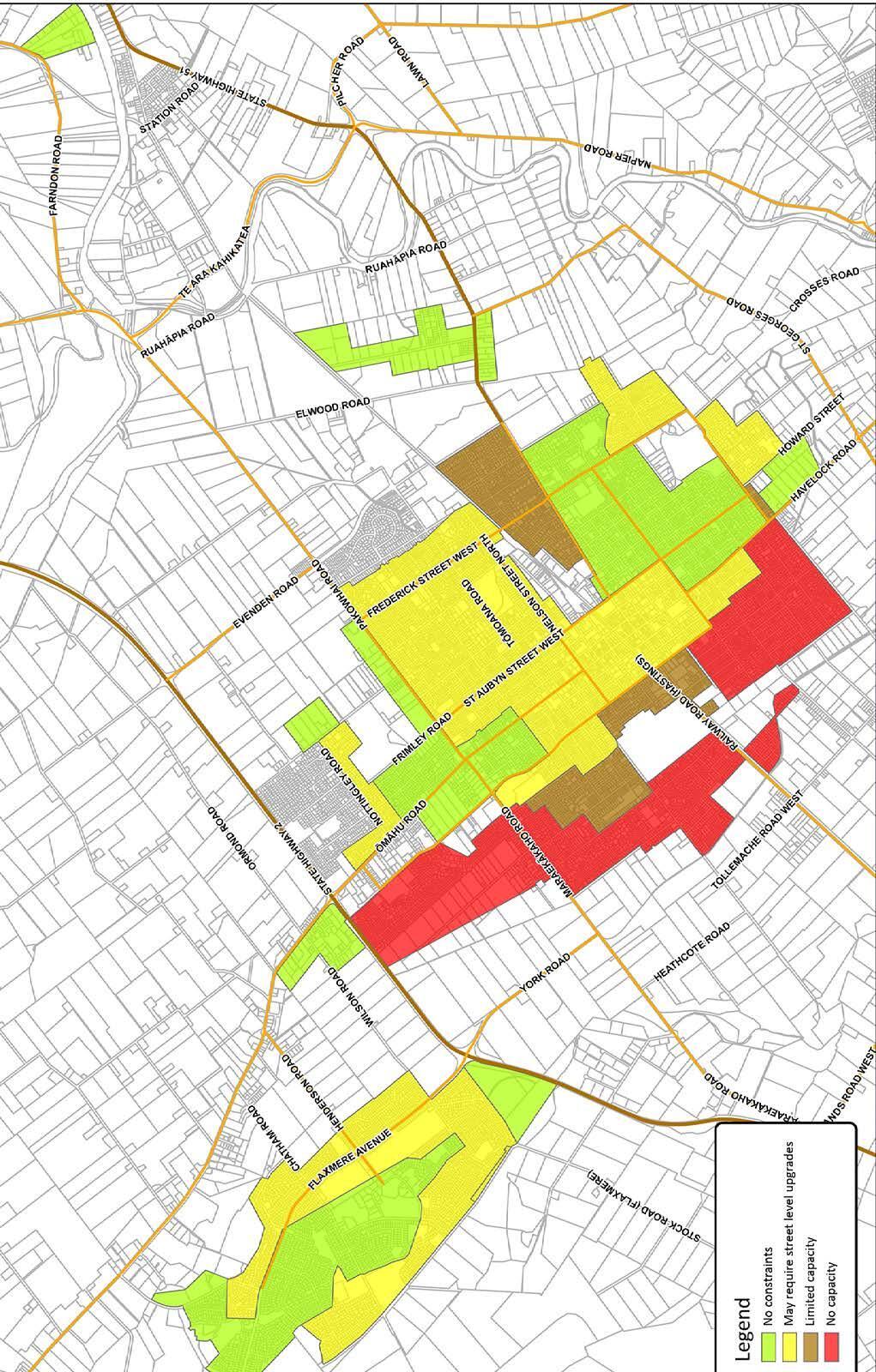
The areas in red are areas where growth is constrained based on the investment in this plan
No Constraints
May require street level upgrades
Limited capacity
No capacity
40 • TE ARA WHAKAORA
Ngā kaupapa tōmina Nice-to-have projects
Council has put considerable investment into community projects over recent years, including walking and cycling projects, upgrading parks, and improving retail areas.
With the difficult financial outlook in the short-medium term as a Council and community, we need to reconsider our priorities.
This Long Term Plan includes funding to look after our existing community assets and address any immediate service issues.
The plan does, however, delay a number of projects while others have been removed from the plan.
Projects that remain in the first three years are:
• Hastings Mall upgrade (linked to KiwiRail safety works)*
• Park upgrades (revegetation works in Havelock Hill reserves).

KiwiRail safety work*
While Council is delaying almost all city centre upgrades, upcoming major safety work by KiwiRail means work in Hastings Mall must be considered. A KiwiRail safety assessment of its pedestrian crossings either side of the city’s water fountain recommends both crossings are kept, but automatic gates, pedestrian maze, accessible ramps, and a 1.4m high fence is erected along the full width of the water fountain. Council staff are working with KiwiRail on options that might help minimise the visual impact of the safety works.
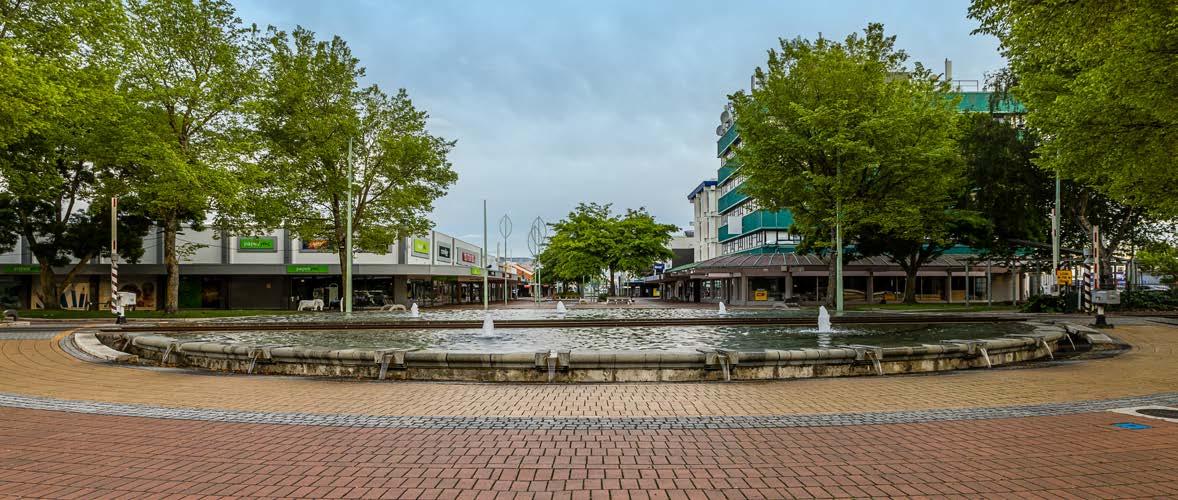
3
ROAD TO RECOVERY • 41
Our theme for this plan is:
Take a breather
Fulfil existing commitments
Signal future intentions
Council has had to look hard at its finances and priorities. We simply cannot afford to do everything we want to.
What does this mean? There is no funding in the plan for the following (other than indicated):
• Splash Planet development
• Civic Square redevelopment (until after year seven)
• Tōmoana Showgrounds development
• new playgrounds (until years five to 10)
• Hastings Library/Art Gallery upgrade
• new events
• walking and cycling initiatives (other than near Ōmahu School)
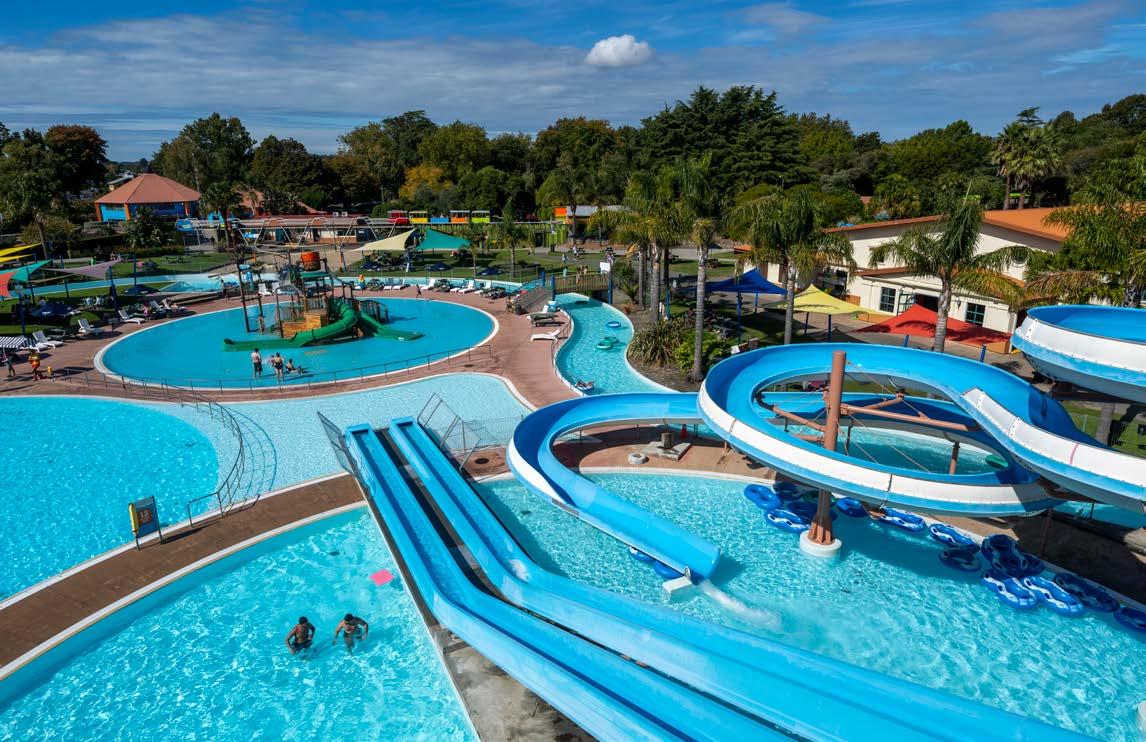
42 • TE ARA WHAKAORA
OUR PREFERRED OPTION
Taking a breather - limited and delayed new investment
The removal of capital investment plans for nice-to-have projects detailed on the previous page amount to about $50m over the first five years of the plan. These projects may be revisited, prioritised and staged in the future, once Council has financial capacity. We think this is necessary to get debt back to manageable levels and to avoid higher rate increases.
ANOTHER OPTION
Advance some projects into the first three years – this will cost more
We want to hear whether you think we have this right. You may feel some projects need to be delivered earlier, but this will have financial consequences both in terms of debt levels and paying interest, and therefore debt repayment costs increasing your rates.
For example adding $50m of nice-to-have projects back into the budget would add about an extra five per cent increase in rates over the first three years if we are to stay within our debt limit.
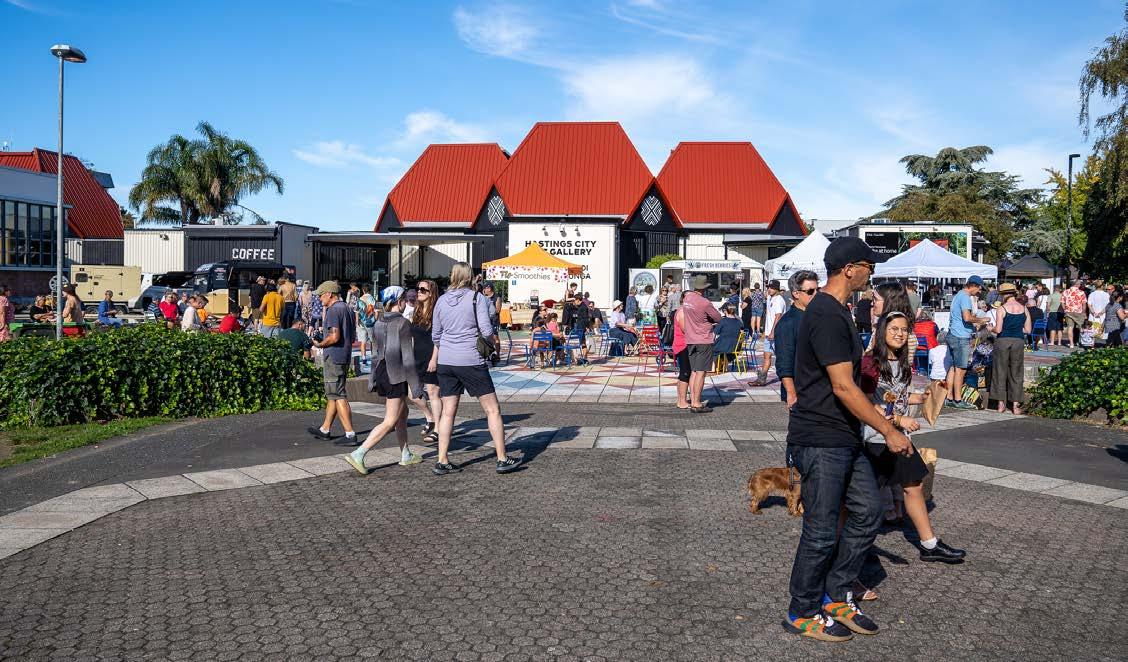
Give us your feedback on nice-to-have projects
ROAD TO RECOVERY • 43
Te mahere whānui i ngā tāke kaunihera me ngā moni tārewa
Overall rates and debt plan
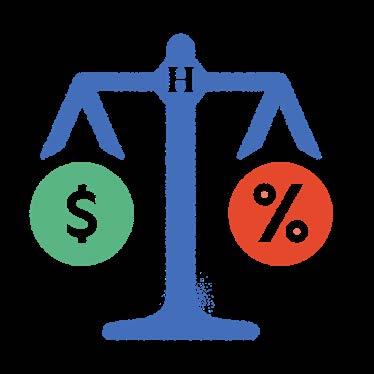
Managing debt and balancing our budget are two key goals in the financial strategy.
Decisions made on these matters influence the amount Council can borrow, and therefore the extent of future rate increases. Council’s proposal is to deal with the cyclone funding impact over three years to get us back on track, and then consolidate Council’s finances to enable it to resume projects that will enable Hastings to keep up with future needs and aspirations.
Savings and funding tools
Council has looked at areas where savings could be made to reduce the funding pressure in the early years of this plan.
It’s a balance because cuts in expenditure often lead to reduced levels of service. That reduction could be to how quickly we can do things, what standard we can do them, or simply how much can be done.
This plan has included a savings target of 2.5 per cent in Year 1 which has helped to reduce the rate increase. The Council will report during the 2024/25 financial year on progress toward achieving this target and where the savings have been found.
We are also proposing that a phasetwo of our savings plan is put in place
to be reported through the 2025/26 Annual Plan. These savings may be more focused on reduced hours at facilities, closure in some cases or stepping away from roles that other agencies can perform.
Our financial ratios
It’s a balance between smoothing the impact on ratepayers and the reality of the costs we face.
The debt to revenue ratio and balanced budget ratios are two important indicators.
Essentially, they control how much we can borrow and show when the Council is meeting its annual costs from annual revenue (instead of borrowing). These ratios are explained on pages 25 and 27.
4 44 • TE ARA WHAKAORA
OUR PREFERRED OPTION
Funding over three years
We will operate at a debt to revenue ratio of 250 per cent for five years, before creating more borrowing capacity by year 10. It means we will balance the budget by year two. This is an important way of measuring whether we are living within our means. The draft plan assumes the savings plan is implemented and that nice-to-have projects are not delivered in the first three to five years. We want to hear your views.
Make further savings and smooth rates increases further
THE FUNDING PLAN THREE YEAR THE FUNDING PLAN FIVE YEAR
Council has considered a longer-term funding recovery strategy over five years. This would reduce the year one proposed increase in rates revenue from 25 per cent to 19 per cent. However, unless significant reductions in costs (and therefore service levels to our community) are found then the saving made in Year 1 would just prolong the period of higher rate increases.
It would mean:
• borrowing an extra $21m over the first three years
• debt would exceed the 250 per cent limit (in years one to four; closer to 260 per cent) meaning less borrowing capacity in case of an emergency
• Overall, this option would add about an extra two per cent in rates increases (due to the increased borrowing), compared with the threeyear option.
Let us know which Council services are less important to you.
Give us your feedback on the overall rates and debt plan
ANOTHER OPTION
ROAD TO RECOVERY • 45
Have your say Kōrerotia tō kōrero
There are two ways to have your say
Head online to myvoicemychoice.co.nz
OR
SUBMISSIONS CLOSE
5PM, MONDAY 27 MAY 2024
Complete the reply-paid card at the back of this document and pop it in any NZ Post letterbox, or to one of the Hastings libraries (Flaxmere, Hastings, Havelock North), or into Hastings District Council customer service centre in Lyndon Road.
More information
This document is a summary of the full Draft Long Term Plan containing the Amendment to the Revenue and Financing Policy–you can download the full Draft Plan at myvoicemychoice.co.nz or view a printed copy at any of the locations below. You can also have your say on the Amendment to the Revenue and Financing Policy and the Draft Development Contributions Policy.
• Hastings District Council Customer Service Centre, 207 Lyndon Road East, Hastings
• Hastings, Havelock North or Flaxmere Library
Got questions? Feel free to phone our friendly customer service call centre on 06 871 5000.
Attend an information event
Visit our website myvoicemychoice.co.nz for more details.
46 • TE ARA WHAKAORA
Te rārangi kaimahi a te Kaunihera Directory of Council




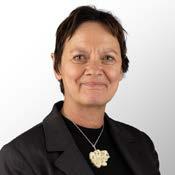


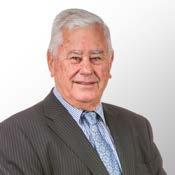





 Vacant
Councillor Alwyn Corban Councillor Ana Apatu Councillor Eileen Lawson
Councillor Simon Nixon
Councillor Wendy Schollum Vacant Councillor Malcolm Dixon
Councillor Michael Fowler
Councillor Kellie Jessup Councillor Marcus Buddo Councillor Kevin Watkins
Mayor Sandra Hazlehurst
Vacant
Councillor Alwyn Corban Councillor Ana Apatu Councillor Eileen Lawson
Councillor Simon Nixon
Councillor Wendy Schollum Vacant Councillor Malcolm Dixon
Councillor Michael Fowler
Councillor Kellie Jessup Councillor Marcus Buddo Councillor Kevin Watkins
Mayor Sandra Hazlehurst
ROAD TO RECOVERY • 47
Councillor Damon Harvey Councillor Tania Kerr (Deputy Mayor) Councillor Henry Heke

TE KAUNIHERA Ā--ROHE O HERETAUNGA HASTINGS DISTRICT COUNCIL 207 Lyndon Road East, Hastings 4122 | Private Bag 9002, Hastings 4156 06 871 5000 | customerservice@hdc.govt.nz | hastingsdc.govt.nz















































































































 Vacant
Councillor Alwyn Corban Councillor Ana Apatu Councillor Eileen Lawson
Councillor Simon Nixon
Councillor Wendy Schollum Vacant Councillor Malcolm Dixon
Councillor Michael Fowler
Councillor Kellie Jessup Councillor Marcus Buddo Councillor Kevin Watkins
Mayor Sandra Hazlehurst
Vacant
Councillor Alwyn Corban Councillor Ana Apatu Councillor Eileen Lawson
Councillor Simon Nixon
Councillor Wendy Schollum Vacant Councillor Malcolm Dixon
Councillor Michael Fowler
Councillor Kellie Jessup Councillor Marcus Buddo Councillor Kevin Watkins
Mayor Sandra Hazlehurst
